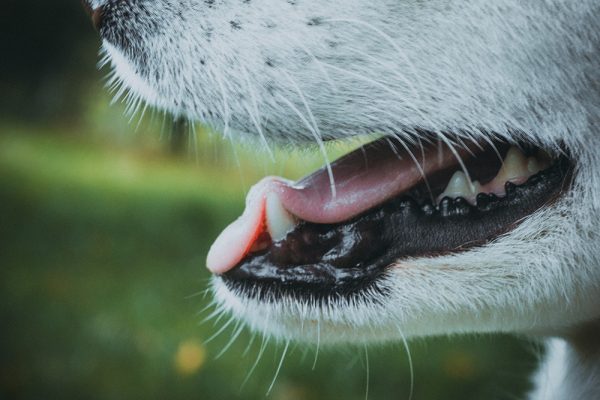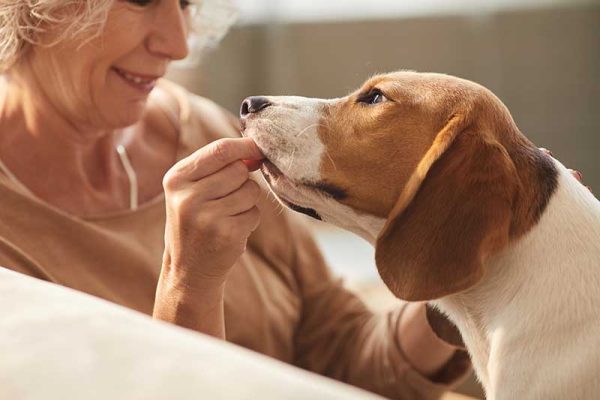In this article
View 3 More +Note: This article’s statistics come from third-party sources and do not represent the opinions of this website.
Throughout the years, pets have moved their way into our hearts and become part of the family. This bond is why leaving your pet behind when traveling is so difficult. With many of us needing service or emotional support animals by our side, airlines have become more open to allowing our beloved animals on board with us.
The big question is, how safe is it for our animals on board? With more animals taking flight, airlines are making things much better for the pets and owners, but they are also narrowing the scope of animals they will allow. Take a look at these statistics for this year and see how common and safe it is for animals to fly.

The 10 Statistics on Shipping Your Pet by Air
- 33% of dog owners travel by plane with their dogs.
- In the United States, more than 500,000 pets, including service animals, travel with Delta Airlines each year.
- Cats and Dogs must be at least 8 weeks old before traveling by plane.
- The private aviation company Vista Jet reported an 86% increase in animals on their private flights between 2019 and 2021.
- PBS Pet Travel has moved 5,328 pets to 183 countries since they started relocating pets in 1989.
- VistaJet reported that 50% of its clients fly with their pets.
- Up to five pet birds can fly in the cargo area of the plane in the United States.
- Alaska Airlines transported over 730,000 animals in 5 years, and its incident rate was only 0.26.
- Hawaiian Airlines had the highest incident rate of 2.03 between 2015 and 2020.
- Approximately 40% of the pet deaths from 2015 to 2020 occurred on United Airlines.


Pet Traveling Facts
1. 33% of dog owners travel by plane with their dogs.
(Forbes)
Going on a vacation isn’t the same without your dog, and most of the dog owners participating in a Forbes survey take their dogs along on vacation. 82% travel by car with their canines, and 33% take them on plane rides.
2. In the United States, more than 500,000 pets, including service animals, travel with Delta Airlines each year.
(Axios)
Air travel is used to transport animals for rescues, adoptions, and agricultural purposes. Add in the number of pet owners simply going on vacation with their pets, and it’s easy to see why federal and state governments have restrictions on animals in the air.
Each airline also has its own set of rules it abides by regarding animals flying. Delta Airlines is considered pretty pet-friendly, but Alaska Airlines may be the best for pet owners.

3. Cats and Dogs must be at least 8 weeks old before traveling by plane.
(US DOT)
Although the airlines have different requirements for pets, they have to follow the regulations established by the United States Department of Transportation (US DOT). Dogs and cats must be weaned for at least 5 days and at least 8 weeks old before entering the airport.
4. The private aviation company Vista Jet reported an 86% increase in animals on their private flights between 2019 and 2021.
(Global News Wire)
More pet owners are choosing to travel with their pets on private flights. According to Vista Jet, more breeders, adopters, and pet foster families are also using private jets for transport. They’ve hired more staff and updated their training procedures to care for the pets on their planes.
This allows for more focus and care to be paid to the animals, even if they aren’t flying with their families.

Pets in the Air
5. PBS Pet Travel has moved 5,328 pets to 183 countries since they started relocating pets in 1989.
(PBS Pet Travel)
PBS Travel is a pet relocating service based in the United Kingdom. It flies pets all over the world and transports them without their owners when they move or go on an international vacation.
When you book a flight with PBS Pet Travel, they ship the dog or cat carrier to your home so that your pet can get used to it before flying. The company takes care of the airline ticket, veterinary paperwork, and customs clearance for entering the UK.
6. VistaJet reported that 50% of its clients fly with their pets.
(The New York Times)
Using a relocation service is an excellent option, but if you want to travel in luxury with your pet by your side, you can book a flight with a private carrier like VistaJet. The flights are expensive, but your pet gets toys, a soft mat to sleep on, and prime cuts of meat to enjoy.

7. Up to five pet birds can fly in the cargo area of the plane in the United States.
(PBS Travel)
The United States Department of Agriculture (USDA) allows passengers to keep up to five birds in the cargo area of the plane. The birds cannot be shipped if they’re a poultry species or going to be sold to a private buyer or company.

Incidents Involving Pets on Board
8. Alaska Airlines transported over 730,000 animals in 5 years, and its incident rate was only 0.26.
(Travel Weekly AU)
Alaska Airlines is considered the most pet-friendly and safest carrier for pets. In 2020, it’s incident rate was zero, even though it transported over 107,042 pets. Its incident rate is six times lower than that of United Airlines between 2015 and 2020.

9. Hawaiian Airlines had the highest incident rate of 2.03 between 2015 and 2020.
(Travel Weekly AU)
In a 5-year period, Hawaiian Airlines had the highest number of incidents of any carrier, and more pets died or were injured in their cargo area. In 2020, their incident rate was even higher, at 2.13, and they only transported 9,302 animals.
10. Approximately 40% of the pet deaths from 2015 to 2020 occurred on United Airlines.
(Travel Weekly AU)
United Airlines is one of the best-known airlines in the world. Unfortunately, it is also one of the worst when it comes to pets. The incident rate includes injuries, and although Hawaiian Airlines had a higher rate, fewer animals died on their flights than on United Airlines flights.

Frequently Asked Questions About the Safety of Shipping Pets by Air
If My Pet Travels in the Cargo Hold, Are the Conditions Different?
No, the cargo hold is pressurized and temperature controlled just like the rest of the plane. There is no need to worry about pets struggling to breathe or dealing with uncomfortable temperatures. (USDA)
Are Pets Allowed to Fly in the Cabin of the Plane?
Each airline has different pet requirements, but in most situations, it depends on the pet’s size. If your pet is smaller, you may be able to transport them under your seat in a ventilated carrier.
However, remember that your pet will count as your carry-on, and the rest of your luggage will need to be checked. (FAA)

How Does the Flight’s Length Affect Traveling With Pets?
Extended flights may be more difficult for some pets to tolerate, and the airlines have limits on which flights allow pets. Most carriers prohibit pets on flights longer than 12 hours, but you can check your carrier’s website to examine their pet policy.
International flights are more complicated to arrange when traveling with pets. Some countries only allow travelers with pets to keep them in the cargo hold, and many have breed restrictions and require health records. (US Department of State)
Are Emotional Support Animals Allowed to Fly in the Cabin With Their Owner?
Emotional support animals are allowed, but they must travel like other pets and are not allowed to sit in a seat like service animals. You have to keep them under the seat in front of you or in the cargo hold. (Market Watch)


Conclusion
As you can see, understanding how flying with animals works helps you evaluate the safety protocols. More pet owners are taking their pets with them when they travel, airlines are doing their best to accommodate them.
One of the best ways to ensure your animal’s safety on a flight is to follow all the directions and guidance the airline offers. They have flown with many animals and understand how the process works. By trusting them, you and your pet will have a better flight while you jet away to new adventures.
See also:


















